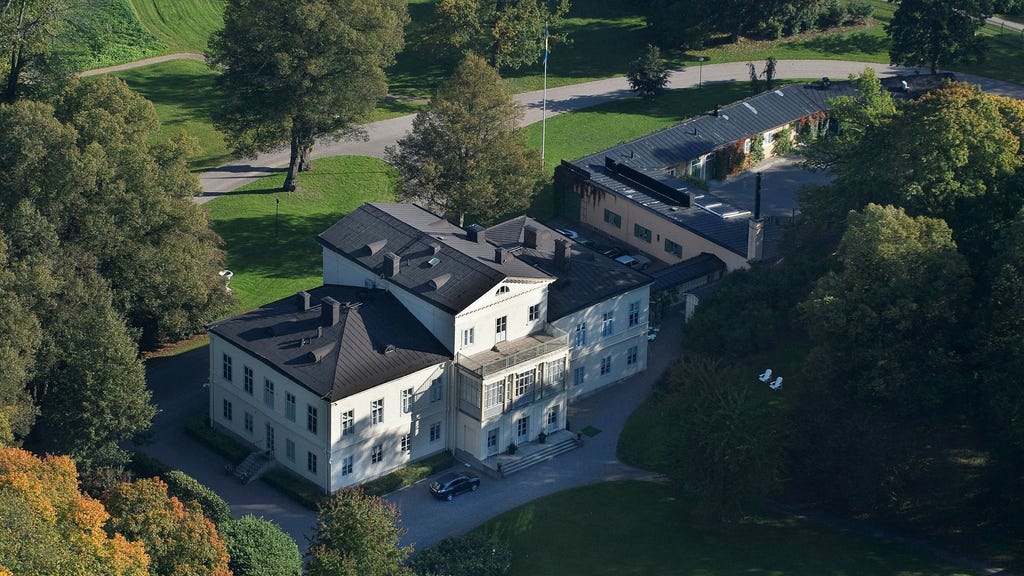On December 4th of the previous year, a concerning incident unfolded outside Haga Palace in Solna, Sweden, the residence of Crown Princess Victoria and her family. A 35-year-old man, a Portuguese national, approached the palace gates wearing a face mask. He used the intercom to request an audience with the Crown Princess, arousing suspicion in the palace guard who immediately contacted the police. The guard described the man as behaving oddly, exhibiting an unusual interest in the palace’s security measures and insisting on personally delivering documents to the Crown Princess. This initial interaction raised red flags, prompting a swift police response.
As police officers arrived at the scene, they encountered the man departing the palace grounds. Despite their attempts to halt him, he continued walking away, necessitating a brief pursuit by one of the officers. Upon apprehension, the officers questioned the man about the presence of any weapons. He admitted to carrying a knife in his pocket, a revelation that proved to be just the tip of the iceberg. A subsequent search of his belongings uncovered a disturbing arsenal: multiple knives, a soft air-gun, a canister of spray, a lighter, narcotics, and five pairs of handcuffs. The man claimed he carried these items for self-defense, asserting that he was at the palace to warn the Crown Princess of an unspecified threat against her life. This explanation, coupled with his unusual behavior, further heightened the authorities’ concerns.
The man’s claims extended beyond self-defense and a supposed threat to the Crown Princess. He insisted on his personal acquaintance with both the Crown Princess and the Queen, although he curiously claimed to have misplaced the Queen’s phone number. This assertion, alongside his insistence on delivering documents and his preoccupation with palace security, painted a picture of an individual possibly struggling with delusions or harboring an unhealthy obsession with the royal family. Adding to the gravity of the situation, one of the Crown Princess’s children was present inside the palace at the time of the incident, raising the stakes considerably and emphasizing the potential danger the man posed.
Following his apprehension, the 35-year-old was taken into custody and subsequently detained. Despite the evidence against him, he maintained his innocence, continuing to assert his acquaintance with the Crown Princess. He offered an alternative explanation for the weapons, claiming they were necessary for protection against an individual who had previously attempted to take his life. However, he refused to divulge the identity of this alleged assailant, casting further doubt on his narrative and raising questions about the veracity of his claims. The man’s refusal to cooperate with the investigation and his insistence on a fabricated relationship with the royal family further underscored the complexities of the case.
The incident culminated in the man’s indictment on Tuesday for a serious violation of Sweden’s knife laws. While the initial charges focused on the illegal possession of weapons, the context surrounding the incident – the targeted location of Haga Palace, the stated intention to contact the Crown Princess, and the presence of a child within the palace – amplified the seriousness of the offense. The man’s behavior, marked by suspicious claims, evasiveness, and a concerning collection of weapons, painted a picture of potential danger, leading authorities to pursue a charge reflecting the gravity of the situation. The case highlights the challenges faced by law enforcement when dealing with individuals exhibiting potentially unstable behavior who target high-profile figures.
The incident at Haga Palace serves as a stark reminder of the vulnerability of public figures, even within seemingly secure environments. The man’s actions, while ultimately thwarted, exposed potential security gaps and underscored the need for vigilance. The case raises questions about the effectiveness of current security protocols and the challenges of identifying and intercepting individuals who may pose a threat. Furthermore, the incident highlights the complexities of balancing security measures with the desire to maintain accessibility and a sense of normalcy for public figures and their families. The incident’s aftermath likely prompted a review of security procedures at Haga Palace and other royal residences, aiming to mitigate future risks and ensure the safety of the royal family.














